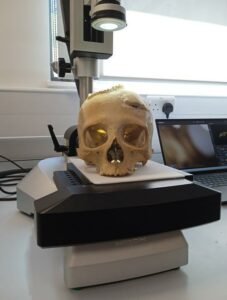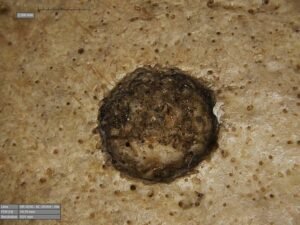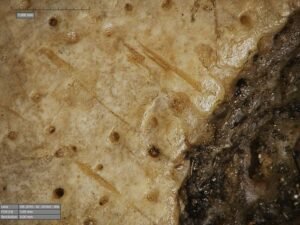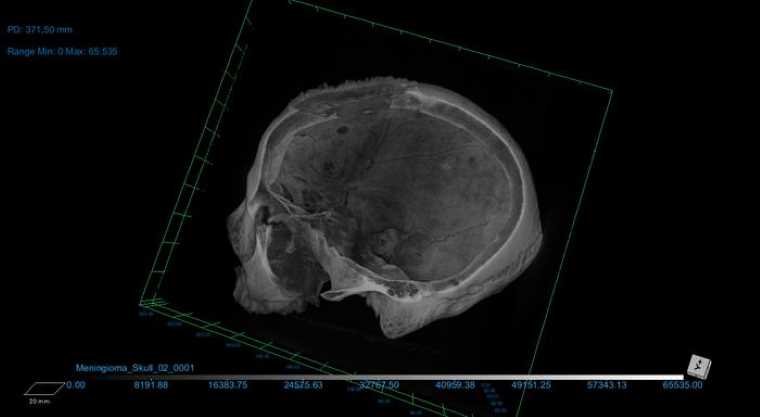An international team of researchers studying a 4,000-year-old Egyptian skull that had signs of cancer say they have found evidence that ancient Egyptian medical practitioners knew about and potentially even tried to treat the deadly disease.
The researchers also found that a second skull, which is over two thousand years old, may also contain evidence that someone received and survived cancer treatment hundreds of years before Christ was born.
While previous studies have revealed that Egyptians from these periods were able to identify, describe, and treat diseases and traumatic injuries, build prosthetics, and even place dental fillings, this study is the first to show that these surprisingly advanced ancient people may have tried to treat cancer around the same time they were building the pyramids.
“This finding is unique evidence of how ancient Egyptian medicine would have tried to deal with or explore cancer more than 4,000 years ago,” said Prof Edgard Camarós, a paleopathologist at the University of Santiago de Compostela and the study’s lead author. “This is an extraordinary new perspective in our understanding of the history of medicine.”
Cut Marks on 4,000-Year-Old Egyptian Skull Leave Researchers Stunned
To conduct their analysis, the researchers were able to procure two separate skulls that showed signs of cancerous lesions. The first, dubbed “Skull and mandible 236,” has previously been dated to between 2687 and 2345 BCE, while the second, “Skull E270,” has been dated to between 663 and 343 BCE. For comparison, the Great Pyramid of Giza is believed to have been built over a period of about 27 years, sometime around 2,600 BCE.


When examining the roughly 30 small, metastasized lesions and one large lesion likely caused by neoplasm spread across Skull 236 under a microscope and also using a CT scanner, the researchers say they were “stunned” to discover something unexpected: clear cutmarks around a number of the lesions.




“When we first observed the cutmarks under the microscope, we could not believe what was in front of us,” said Tatiana Tondini, a researcher at the University of Tübingen and first author of the study.
In fact, according to Tondini, they weren’t even looking for things like cutmarks in the first place. “We wanted to learn about the role of cancer in the past, how prevalent this disease was in antiquity, and how ancient societies interacted with this pathology,” the researcher explained.
Signs Ancient Egyptian May Have Received and Survived Cancer Surgery
After finding evidence of cutmarks on the 4,000-year-old Egyptian Skull known as 236, the team performed a similar analysis of Skull E270. Like the older sample, E270 also had a large lesion the researchers described as “consistent with a cancerous tumor that led to bone loss.” However, unlike the other skull, this specimen had two smaller, “healed” lesions likely caused by traumatic injuries. Furthermore, one of the smaller lesions appears to be the result of a “close-range violent event” involving some sort of sharp instrument.
A closer analysis showed that this second lesion appeared to have healed after encountering a sharp object. Such a finding hints at the possibility that this person had surgery to remove cancer and then survived the treatment. “These healed lesions could mean that the individual potentially received some kind of treatment and, as a result, survived,” the press release announcing the study explains.


The researchers concede that the injury could be the result of combat. However, they also point out that E270 belonged to a roughly 50-year-old woman. In ancient Egypt, it was rare to find evidence of women in any form of combat, especially one of such an advanced age, meaning either answer could have the potential to rewrite the history books.
“Was this female individual involved in any kind of warfare activities?” asked Tondini. “If so, we must rethink the role of women in the past and how they took (an) active part in conflicts during antiquity.”
Fragmented Past Complicates Accurate Study
Published in the journal Frontiers Medicine, the research study offers a unique look into the people of ancient Egypt and how they may have tried to understand and even treat cancer. Moving forward, the team says that more research could help fill in the blanks. However, they also caution that their particular field of inquiry often reveals only a part of the picture, especially when dealing with something as ancient as this 4,000-year-old Egyptian skull.
“In archaeology, we work with a fragmented portion of the past, complicating an accurate approach,” Isidro explained. Nonetheless, the team says their findings are both stunning and extraordinary and, at a minimum, could lay out a clear path for future researchers trying to understand the role of cancer in ancient society to follow.
“This study contributes to a changing of perspective and sets an encouraging base for future research on the field of paleo-oncology,” said Camarós, “but more studies will be needed to untangle how ancient societies dealt with cancer.”
Christopher Plain is a Science Fiction and Fantasy novelist and Head Science Writer at The Debrief. Follow and connect with him on X, learn about his books at plainfiction.com, or email him directly at christopher@thedebrief.org.

